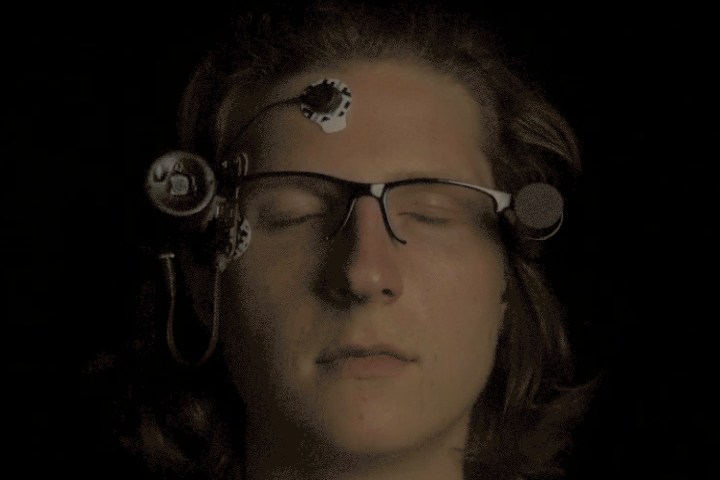
A blink might only last around 0.3 to 0.4 seconds, but that’s still enough time for you to miss information, hence the phrase “blink and you’ll miss it.” Researchers from Germany’s University of the Arts Bremen have come up with a device to help solve that problem — and it’s either the best or weirdest wearable we’ve heard about in ages. (Probably a bit of both, to be honest!)
Called “Augenblick” (German for “blink of an eye”), the wearable device records every frame of footage that’s missed when a person momentarily closes his or her eyes. To do this, it measures muscle activity around the eye by way of an electromyography sensor attached to the temple. This is used to detect miniscule electrical changes under the skin and translate that into a detectable signal. Meanwhile, a camera records the point of view of the wearer. By combining both of these information sources, it’s possible to process a video stream of all the moments missed by the wearer.
“What enabled us to create a device like Augenblick in the first place was the rapid advancement in development boards like the Arduino and Raspberry Pi,” René Henrich, one of the project creators, told Digital Trends. “These devices have gotten smaller to the point that they are suitable for the development of wearable technology. This creates opportunities to build devices that were incredibly hard or even impossible for the average person to develop before.”

Manasse Pinsuwan, Henrich’s collaborator, explained that the project is intended more as a proof of concept than a finished product.
“The idea of Augenblick is to explore a new form of visual processing,” Pinsuwan said. “We see a lot of potential for further technical and conceptual applications. We are eager to try new sensors and cameras to improve the current version and broaden the approach of unconscious recording measures to other potential triggers such as yawning, laughing, or your own heartbeat. To us, Augenblick also poses highly philosophical questions about the understanding of one’s own reality and a kid’s curiosity [concerning] whether the light in the fridge would still be on once the door is closed.”
Pinsuwan noted that Augenblick still has a long way to go in order to be feasible for the average consumer. Size, ease of use, and reliability are all factors that need to be improved. Still, once that’s sorted, we may be able to finally start to claw back those several years of our lives (based on an average of five blinks a minute for 18 hours a day) we waste over the course of an average life span.


